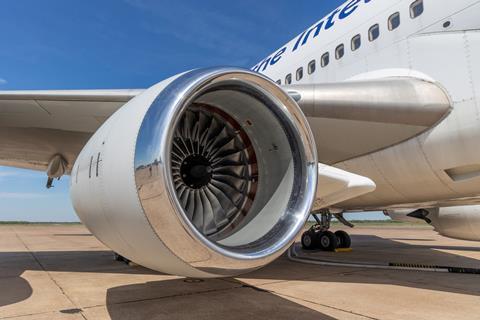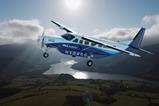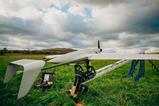Rolls-Royce hopes to have wrapped up flight testing of the new Pearl 10X business jet engine by the end of the summer as the programme gathers pace.
Developed for the ultra-long-range Dassault Falcon 10X, flight tests of the powerplant began on 29 March when the engine marker’s Boeing 747-200 flying testbed was ferried to its facility in Tucson, Arizona from Waco in Texas following modifications carried out by L3Harris.

Since then Rolls-Royce has continued to rack-up test flights, and, thanks to a 29 May sortie lasting 3h 51min, has hit double-digits.
Early tests saw the Pearl 10X confirming its high-altitude performance, with the 747 flying at up to 45,000ft. “It came back with really good results, which is very encouraging for us,” says Philipp Zeller, executive vice-president, Dassault, at Rolls-Royce.
“We are really pleased with the performance of the engine at altitude – it shows exactly what we expected from all our testing in the [test] beds and obviously the experience we have with the platform and the Advance2 technology,” adds Dr Dirk Geisinger, the head of Rolls-Royce’s business jet division.
Addressing the high-altitude testing has been enabled by the 747’s unusual configuration, which features three different engine types – three standard RB211s, the Pearl 10X and a Trent 1000 TEN, previously installed as part of the widebody powerplant’s own development.
It is the latter engine and its around 80,000lb (355kN) of thrust – some 30,000lb more than an RB211 – that has enabled the high-level flights.
“It give us muscle,” says Zeller. “It allows us to push the performance of the aircraft a bit more than the 747-200 would otherwise have allowed us to test the 10X.”
The next phase of the campaign will focus on engine relight testing, specifically aimed at evaluating the performance of the new compressor technologies.
Representatives from Dassault will subsequently have the opportunity to fly aboard the 747, says Zeller: “We will give our customer the opportunity to witness first-hand the engine’s behavior in flight.”
Two Pearl 10Xs will be used for the flight-test campaign, with the initial example – installed on a specially designed pylon on an inboard station on the 747’s starboard wing – due to return to Rolls-Royce’s facility in Germany “in the coming months”, says Zeller. Its sister engine will then be installed and used to address different test points such as anti-icing performance.
Rolls-Royce hopes to wrap up the flight-test campaign by the end of the summer, enabling delivery of the powerplant pair to Dassault in line with plans for the Falcon 10X’s maiden sortie next year.

Zeller says the company has no firm target on the number of flights the engines need to be perform, simply “as few as possible but as many as required”. Overall, the flight-test programme will be “a few months long”, he says.
However, he will not be drawn on the certification timeline save to say it will be “well ahead of aircraft certification”. Dassault has set a target of achieving service entry for the Falcon 10X in 2027.
However, he adds: “The process has started and we have already got quite a few certification tests on the ground in the bag.”
In total, the Pearl 10X has accumulated 2,500h – having adding 200h since the first test flight – across 7,700 cycles of ground and flight testing, including of the preceding Advance2 demonstrator.
Before both engines can be handed to the airframer, the first will need to be modified, converting it from a left- to a right-hand installation, a process requiring a change to the engine build-up and mount system, along with the nacelle.
Zeller says the the flight-test programme is “a real confidence builder for both of us”, adding: “It helps us to really understand what it does and also giving Dassault engines that will have flown and demonstrated their reliability before they go on to the Falcon 10X.
“There is enough novelty for Dassault on the aircraft, they want to be sure engines perform perfectly from day one.”
Adds Geisinger: “It is a very rewarding moment if you look into the eyes of your customer and they have a big smile.
“We are really happy. In terms of what we want to get out of the testing it’s pretty good. You always find things but we have not discovered anything material; everything is in line with predictions, which for us to corroborate our models is really good.”
Neither Rolls-Royce or Dassault have disclosed the exact thrust rating of the Pearl 10X, other than to say it will be more powerful than the 18,200lb produced by the Pearl 700 for the Gulfstream G700.































